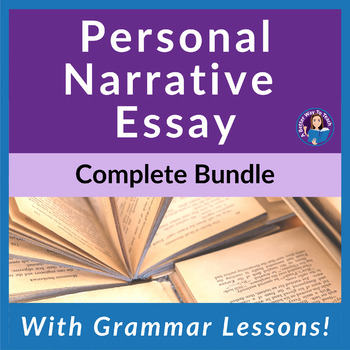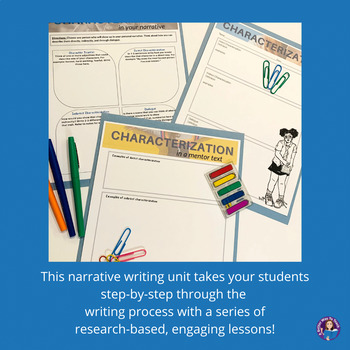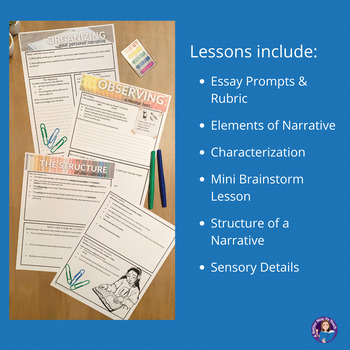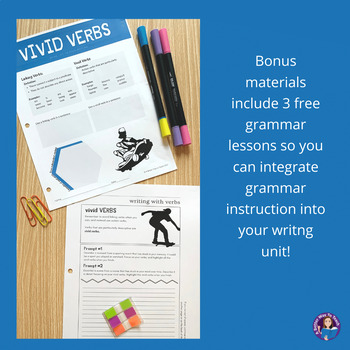Personal Narrative Essay Writing Unit For High School Students
- Google Drive™ folder

What educators are saying
Products in this Bundle (6)
showing 1-5 of 6 products
Bonus
Description
Use this personal narrative essay writing unit to teach your students how to craft powerful narratives through this step-by-step method that uses research-based techniques to lead students toward great writing!
What The Personal Narrative Essay Unit Includes
- SIX resources for narrative writing- includes lessons on observing elements of narratives, brainstorming, sensory details, structuring a narrative essay, characterization, plus the bundle includes narrative prompts and editable rubric
- List of TEN mentor texts (with clickable links) to showcase great narrative pieces
- THREE bonus grammar lessons for an integrated approach to grammar and writing (these are optional)
- Day-by-day breakdown for when to teach each lesson
- Teacher notes and teacher tips for each lesson
- Editable and attractive handouts for each lesson
What The Narrative Lessons Looks Like:
- The narrative lessons include a short fully-editable slides presentation on the concept with guided notes
- Then, students will work with a mentor text (a complete, but short narrative) where students can look for the concept (such as characterization or conflict)
- Then students will brainstorm how to use that concept in their own narratives on the graphic organizers provided
Bonus Materials Include Optional Grammar Lessons:
- Each grammar lesson starts with a fun warm up
- Then, you'll teach or review the concept briefly
- Then you'll show students great mentor sentences with that concept
- Last student will practice using the concept in a sentence frame and then in their own writing
- They can apply the grammar concept to their narrative writing
How These Lessons Engage Your Students
- These lessons allow students to tap into their own stories, and once they do, they have a clear plan for how to get that story on paper--this alone engages them to work hard to get it out.
- Unit includes opportunities to listen to oral stories which engages auditory learners, struggling readers, and students with learning differences like dyslexia
- Handouts and slideshows are eye-catching and created with teens in mind
- All lessons lead to immediate application in the form of student writing
Differentiation
In each lesson I give you specific ways to differentiate the lessons if you have ESL students, emergent learners, or pre-AP or AP students.
What You Can Expect
Expect your students to create some outstanding narratives and they will! This step-by-step method will get them there even if they don't think they have a story to tell.
Want to see more about how this narrative writing unit engages your learners? Check out my blog post "5 Ways To Spice Up Your Personal Narrative Unit."
Interested in getting a complete FREE GRAMMAR UNIT to help you start teaching grammar with mentor sentences? Click here for a FREE UNIT!





